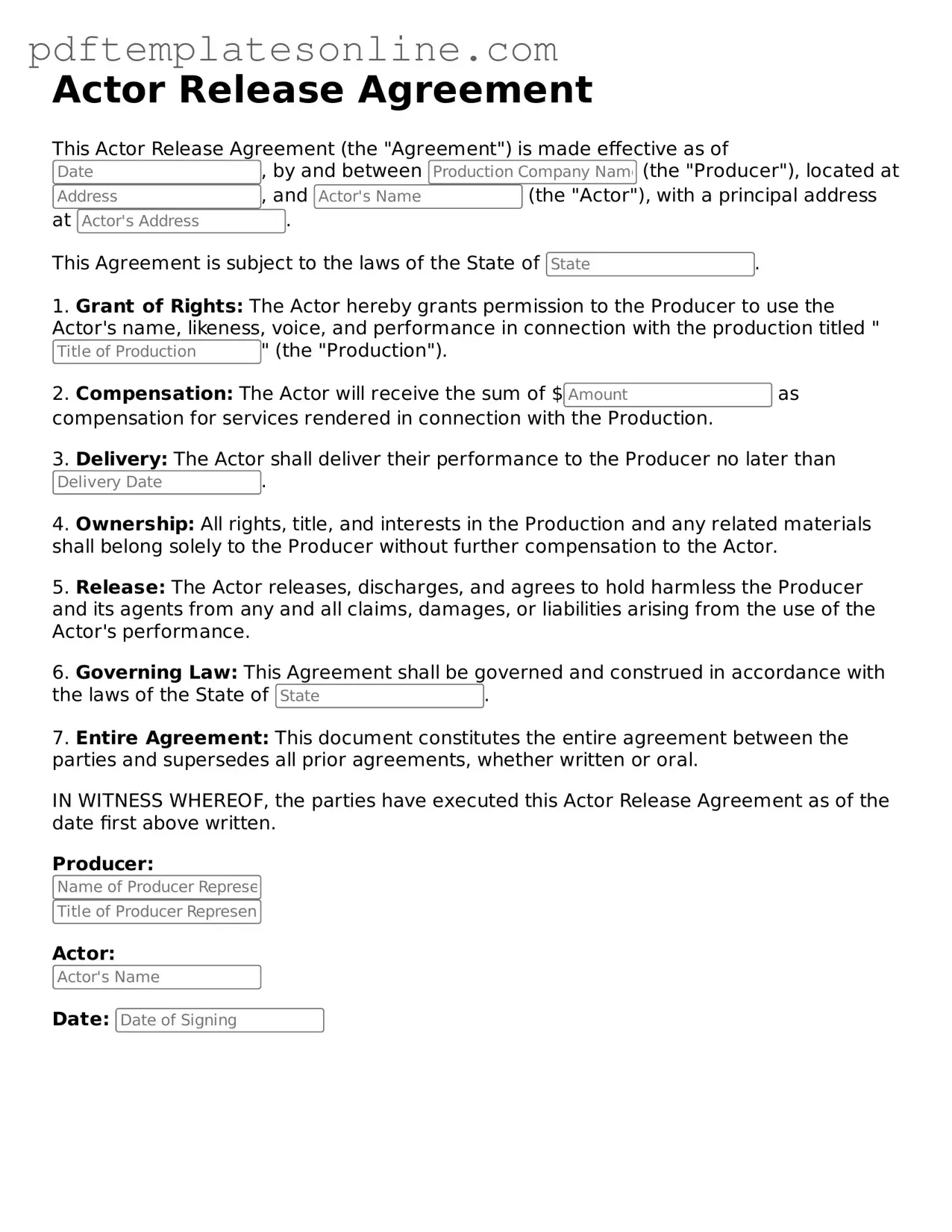Completing an Actor Release form is an essential step for anyone involved in a production. However, several common mistakes can lead to complications down the line. One frequent error is failing to read the entire document before signing. Understanding the terms and conditions is crucial. A hasty review can result in overlooking important clauses that may affect rights and compensation.
Another mistake is not providing accurate personal information. It is vital to ensure that your name, address, and contact details are correct. Any discrepancies can create challenges when it comes to communication or payment. Additionally, many individuals forget to include their Social Security number or Tax Identification number, which can delay processing.
People often neglect to specify the project name or title clearly. This omission can lead to confusion about which production the release applies to. Without a clear reference, it may be difficult for producers to ascertain the scope of the release. Furthermore, failing to indicate the duration of the release can cause future disputes regarding usage rights.
Some individuals mistakenly think that signing the form is the end of the process. In reality, it is essential to keep a copy of the signed document for personal records. This ensures that you have a reference point should any questions or issues arise later. Not retaining a copy can leave you without proof of your agreement.
Another common oversight is not discussing the terms with a trusted advisor or legal representative. While it may seem straightforward, understanding the implications of the release is important. Seeking guidance can prevent misunderstandings and ensure that your rights are protected.
Additionally, many actors fail to clarify the scope of the rights being granted. It is important to specify whether the release covers just the current project or extends to future uses. Misunderstandings about this can lead to disputes over compensation or credit in the future.
Some people also overlook the importance of including any special conditions or limitations. If there are specific areas where you do not want your image or performance to be used, these should be clearly stated in the form. Otherwise, you may inadvertently grant broader rights than intended.
Another mistake occurs when individuals sign the form without a witness or notary, if required. Some productions may have specific requirements regarding signatures. Failing to comply with these can render the release invalid, leading to potential legal issues.
Lastly, many actors do not take the time to ask questions if they are unsure about any part of the form. It is perfectly acceptable to seek clarification. Ignoring uncertainties can lead to unintentional agreements to unfavorable terms.
By being aware of these common mistakes, individuals can navigate the Actor Release form process more effectively. Taking the time to review, ask questions, and ensure accuracy can help protect your rights and interests in any production.
